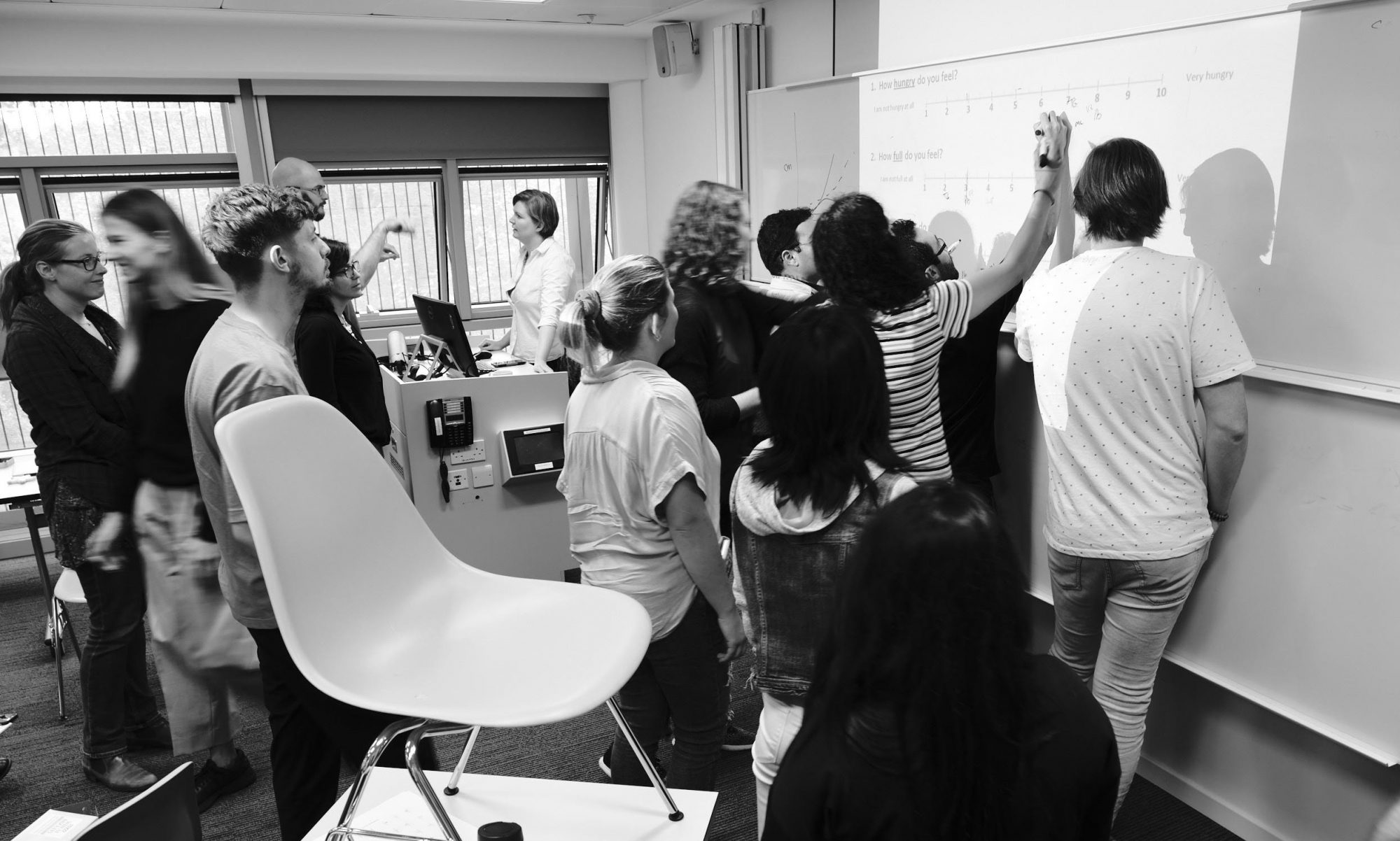Welcome to 35 minutes! we have arrived at the recommended time it takes to mitigate the effects of sitting at work all day. How do you feel? Over the past six weeks you’ve been increasing your Time Under Tension – the total time in your workout that you are doing work (versus your recovery time). Time under tension usually happens as you increase the length of your workouts so that you are asking your body to endure more effort and adapt to that effort.
TUT is different that VOLUME – where volume is pretty much the number of reps you do of a movement. For example – doing the almighty 100 push ups – fast – versus 100 push ups where you’re doing at least one second up and one second down – it’s the same VOLUME in terms of number of reps, but the INTENSITY is different for the slower version: slower movement, more time where the body is under load between recovery bouts – so TUT is greater.
Getting to more time under tension is associated with greater muscular and associated metabolic responses, which is fantastic, but takes time – like adding a block a week – to build up to that level.
Isometrics for Time under Tension
And if we’re looking at really being able to look at Time under Tension, isometrics let us focus on those holds – isolateral isometrics also add an additional strength challenge
In our last week of this pilot, you can put together blocks any way you wish AND, building on last week’s bilateral isometrics, explore isolateral isometrics this week.

YOu can put together your blocks any way you wish this week – one recommendation would be to keep your week five blocks and add a final isolateral isometric block.
YOu can make any isolateral movement an isotmetric by finding a challenging point – usually where its at the most loaded or lever disadantaged – and use that as your hold point.
Some examples of isolateral isometrics are the side plank (shown). In one block simply alternate sides – hold up for 15; recover – 5 times side a/ 5 times side b, you know the drill. Each five is one set.

Other isolateral isometrics include the Bulgarian Split Squat – try holding that in the most challenging position (front leg bent to squat position – also shown)

You can also choose a push up, but move the hand positions so that one hand is either up on a block or stack of books or further back or in front of the other hand that stays in a kind of normal position – and then keep your body just an inch or so above the deck.
In fact you can do the same with the feet in the push up

-raise one back foot then the other – while holding your upper body still.

You can also do L-sit variants where you raise and hold one leg out while the other is tucked – THis is effectively a dip (using two chairs) with one leg out.
In other words, you can explore whatever alternating limb holds you wish – by all means use the closest thing to what you try from the list available in the app, and make a note of what you did.
Where BALANCE comes into strength.
A key difference between isolaterals and bilateral – whether isometrics or not – is not only change in strength management but the balance part of strength comes into play too. This change creates a new kind of challenge for the body – but just in terms of strength – also often brings smaller stabilizer muscles into play in the spine. That’s a good thing.
When we make isolaterals also isometrics we get to explore our endurance with those wee muscles too – another good thing.
In the case of these iso iso’s – be gentle with yourself – explore where the challenge parts are in the movement, as places to which you can return over time.
RECOMMENDED – only do one block this week as isolateral isometrics – give yourself a chance to get used to these.
Yielding and Overcoming Isometeric Isolateral?
REMINDER FROM LAST WEEK – you can change any bodyweight yielding isometric (remember what yielding is?) into an overcoming isometrics by pushing or pulling against a fixed point, as shown below.

Can you see options for exploring isolateral isometrics? One below shows a person in a lunge (isolateral) position while hanging onto handles on a rack in a weight room, and then would be trying to stand up from that left side leg. How might you try something like this at home or outside – perhaps with a stairway banister, maybe a rope too?


Ok, hope you have fun this week
- Celebrating getting to 35 minutes a day
- building up time under tension (TuT)
- exploring a new kind of isolateral
- feeling stronger!
Thank YOU!
Thank you so much for your help in this study -we’ll be reaching out for feedback to review what we think we’ve heard you request, and to co-design with us towards the next study in the fall.
On Teams, please let us know, what would you like/need to help you keep going with your strength practice once this study is over? If we can support you further, now that we’ve got started, we will.






